
(Photo by reurinkjan)
Today is International Vulture Awareness Day, and I thought it would be appropriate to write about records of vultures in Singapore.
But why do we need a day to celebrate vultures? As stated on the International Vulture Awareness Day website:
Vultures are an ecologically vital group of birds that face a range of threats in many areas that they occur. Populations of many species are under pressure and some species are facing extinction.
The International Vulture Awareness Day has grown from Vulture Awareness Days run by the Birds of Prey Programme in South Africa and the Hawk Conservancy Trust in England, who decided to work together and expand the initiative into an international event.
It is now recognised that a co-ordinated international day will publicise the conservation of vultures to a wider audience and highlight the important work being carried out by the world's vulture conservationists.
Singapore is home to many species of raptors, but vultures are not usually included among our native birds. In the past, a number of vulture species were known to occur in Peninsular Malaysia and Thailand, but supposed records of 2 of these species in Singapore are believed to be erroneous. In any case, these Southeast Asian vulture populations have now all but vanished, making it even less likely that one of these will somehow wander all the way to Singapore.
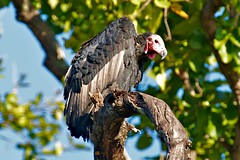
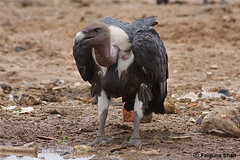
Due to a lack of verifiable evidence, old records of the red-headed vulture (Sarcogyps calvus) (left) and the white-rumped vulture (Gyps bengalensis) (right) in Singapore are believed to be in error;
(Photos by lucvanderbiest and falguna_shah)
However, in recent decades, one other species of vulture has quite unexpectedly been making sporadic appearances, and every time one is sighted, it creates a stir within the local birding communities.

(Photo by jcozannet)
The Himalayan griffon vulture (Gyps himalayensis) is the second-largest vulture in Asia, with a wingspan that can range from 2.6 to 3.1 metres, and is typically a resident of the uplands of central Asia, from Afghanistan and Kazakhstan to the Tibetan Plateau and Himalayas. Although it does not usually migrate large distances, it is known to be an altitudinal migrants, with sightings of birds in lowland areas of northern India during the winter months.
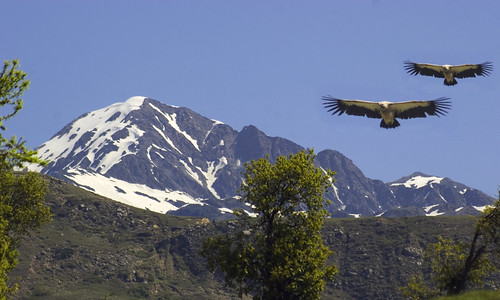
Himalayan griffon vultures over the mountains of Kashmir;
(Photo by NotMicroButSoft)
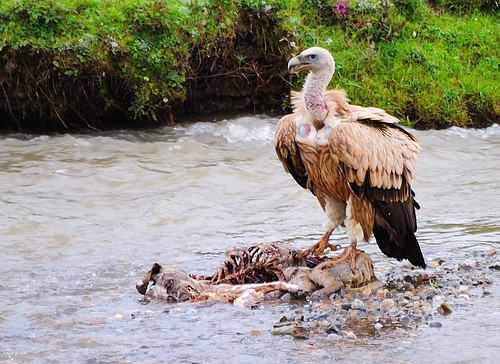
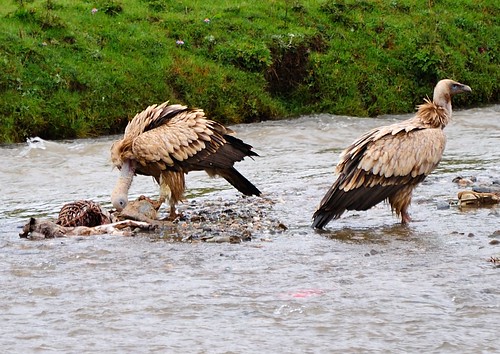
Himalayan griffon vultures in Qinghai, western China;
(Photos by reurinkjan)
Every once in a while, for some unknown reason, these vultures fly beyond their usual haunts, and enter Southeast Asia. With sightings in Myanmar, Thailand, Cambodia, and Peninsular Malaysia, some of these vultures have apparently managed to fly all the way to Singapore!
The first Singapore record of Himalayan griffon vultures was in Tuas in December 1989. At least one of these birds was captured, and as of August 2008, was known to be still living at the Jurong Bird Park.
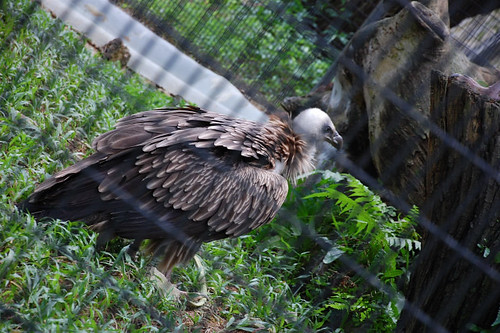
Himalayan griffon vulture at Jurong Bird Park;
(Photo by Diyana AR)
In January 1992, a group of 9 vultures roosted at Bukit Timah Nature Reserve.
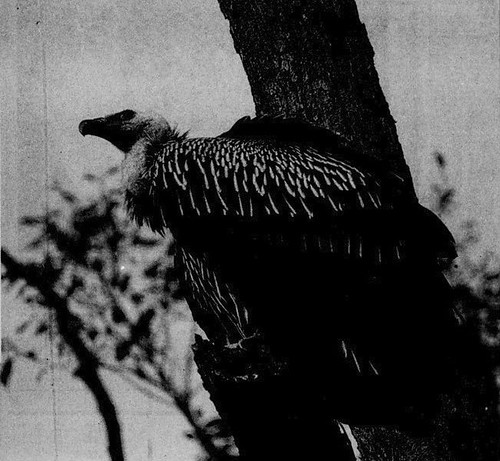
One of the vultures spotted at Bukit Timah;
(The Straits Times, 10 February 1992)

(The Straits Times, 10 February 1992)
After a long interval, Himalayan griffon vultures were spotted again in Singapore, with a pair seen at Kent Ridge, and another sighting of a pair in the Orchard Road area in January 2005. One of the vultures was subsequently encountered at Nanyang Girls' High School off Dunearn Road. Weak and unable to fly, it was picked by the Jurong Bird Park.

(The Straits Times, 12 January 2005)

This was the Himalayan griffon vulture rescued from Nanyang Girls' High School;
(Photo by glassdog00)
January 2006 saw another vulture at Changi Cove, and one more turned up in Ang Mo Kio in December of that same year. In both cases, the vultures appeared weak and exhausted, and were subsequently sent to the Jurong Bird Park.

Himalayan griffon vulture at Changi;
(Photo by Wang Luan Keng)
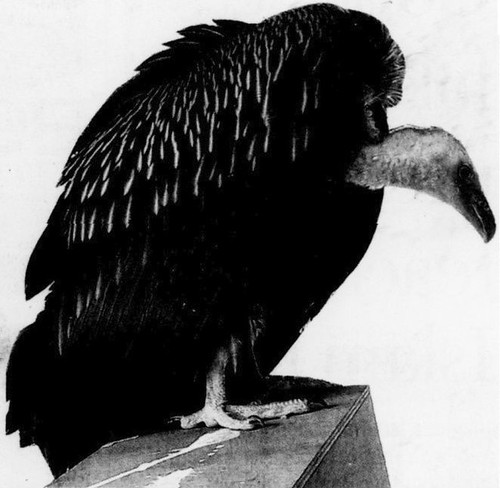
The same vulture rescued from Changi;
(The Straits Times, 29 January 2006)

(The Straits Times, 29 January 2006)
More Himalayan griffon vultures were seen in January 2008, with an individual seen in Upper Seletar, three in Bukit Timah, and a single bird that was seen soaring over a grassland in Yishun before flying over to Johor There is also a sighting of a vulture in Braddell from February.

A pair of Himalayan griffon vultures soaring above Bukit Timah;
(Photo by Lee Tiah Kee)
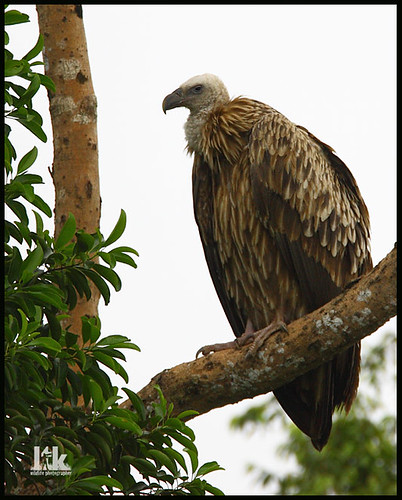
(Photo by Lee Tiah Kee)

Himalayan griffon vulture at MacRitchie;
(Photo by Leslie Fung)
Himalayan griffon vultures made an appearance again in 2010, with a single bird seen at MacRitchie Reservoir. In March 2010, a pair was seen flying above Sungei Buloh, coinciding with the Annual Bird Census.
Where are all these vultures coming from? It may be easy to assume that these represent escapees from captive collections, or the exotic bird trade. However, most of these vultures do not seem to be suffering from any damage to the tail and flight feathers, or staining from faeces, as would be seen in large birds confined for long periods of time within a cage.
What is interesting is that for most of these records, the vultures are juveniles, which suggests that this is linked to the tendency of immature raptors to disperse and wander after fledging. It is likely that some of these end up straying beyond their usual haunts, due to inexperience with foraging and navigation. That these sightings typically occur during the winter months also hints at the possibility that this is linked to a reduction in food supply during winter. Of course, it also raises the question as to whether there have been any changes to the vultures' sources of food up in the mountains; some wild ungulate species like Tibetan gazelle (Procapra picticaudata) and chiru (Pantholops hodgsoni), whose carcasses would have fed and sustained Himalayan griffon vultures, have suffered greatly in recent years due to rampant hunting.


Left: Male Tibetan gazelle;
(Photo by marc.foggin)
Right: Male chiru;
(Photo by yun dan)
Although the Himalayan griffon vulture is not typically migratory, it appears that every once in a while, something occurs in the central Asian uplands, triggering juvenile vultures to disperse far and wide, with some flying as far as Thailand, Malaysia, and Singapore. And if the story of this Himalayan griffon vulture that was supposedly caught in Bintan is to be believed, some of them might even cross the large expanses of sea into Indonesian territory.
Whether this is the result of population irruption, in which a large increase of numbers causes vultures to wander far beyond their usual range, or a possible range expansion, with vultures possibly establishing themselves in areas outside of their current distribution, remains to be seen. The fact that many of these vultures are in poor condition, likely a combination of flying such great distances as well as a lack of large carcasses to feed on, probably means that Southeast Asia does not offer much suitable habitat for these scavengers.
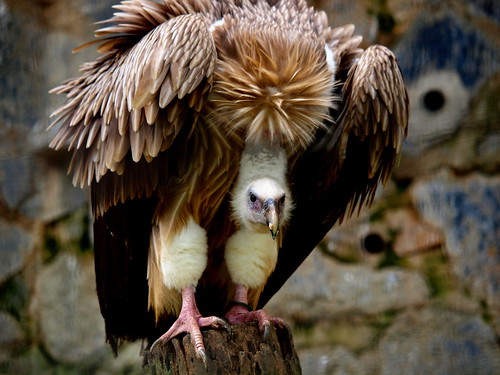
(Photo by Market Uncle)
Much of this information, including a comprehensive list of records of Himalayan griffon vultures in Southeast Asia, is covered in this 2008 article by Yong Ding Li and Chaiyan Kasorndorkbua.